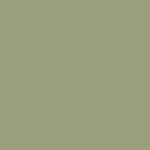Natural paint from Sweden: paint with an ancient history
Suited for rough, untreated wood
In Sweden, wooden houses have been painted with natural paint for hundreds of years. The recipe might have been altered slightly over the years, but the core of the traditional recipe has always been natural, renewable, raw materials; such as (boiled) linseed oil, wheat, rye flour and natural or nature identical pigments.
Moose S follows this age-old recipe with an artisanal manufacturing process. Unlike most regular paints, this natural paint is not harmful to the environment. Many paints cause nuisance by releasing paint fumes that are unhealthy for humans and the environment. The environmental impact occurs not only through production, composition or use of the paint, but also in sanding and burning off old paint residues that end up in the environment. Whereas regular paint mainly adheres to the surface of the wood, natural paint Moose S penetrates deeply into the surface and does not need to be sanded off during maintenance.
- Does not contain VOCs, solvents or other harmful substances
- Produced in Sweden, with as much renewable materials as possible
- Maintenance without sanding, so no paint residues are released into the environment
- Does not smell, is easy to spread, is absolutely harmless to people and the environment
- Suitable for very rough, untreated wood
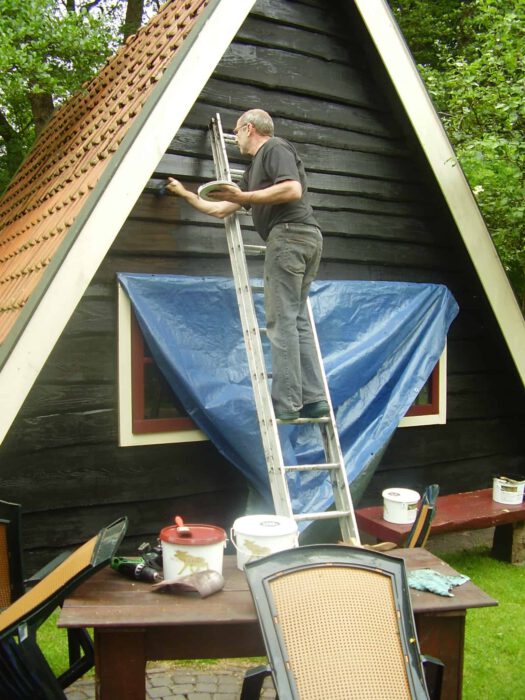
The effect of linseed oil in Swedish natural paint
Moose S (and also Moose F) is a sustainable product and a true natural paint. The Moose S recipe probably originated around 1255 in Sweden. The base consists of pigments, filler (to make it spreadable and give it a base) and a drying oil. Thanks to the oil, the paint hardens and adheres to the surface.
Even today, a drying wood oil is the key to wood paint. Traditionally, linseed oil has proven to be the most suitable for this. Linseed oil is pressed from the linseed of the flax plant. A cloudy substance is formed when the seeds are pressed. When the oil has settled, a clear oil is formed, which is called “stand oil”.
Moose Färg S has a natural water-repellent effect due to the addition of linseed oil and is therefore very suitable for outdoor wood, such as fences, facades and garden houses.
In Sweden, some people still make their own natural paint. It is no coincidence that natural paint is an important topic of conversation in Sweden, as a lot of people live in wooden houses. For that, a little knowledge of paint is, of course, quite useful.
If you want to know more about the origin of Moose S natural paint, read more about The origin of Moose Färg.
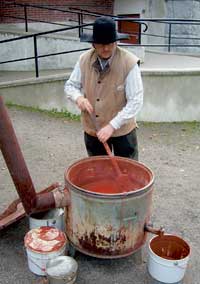
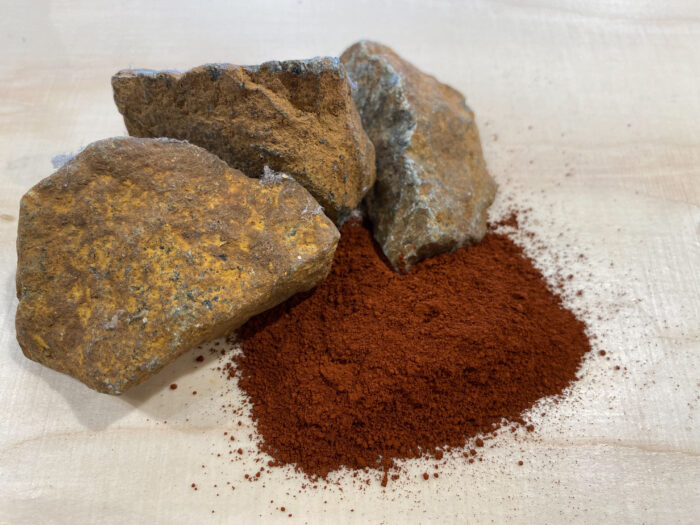
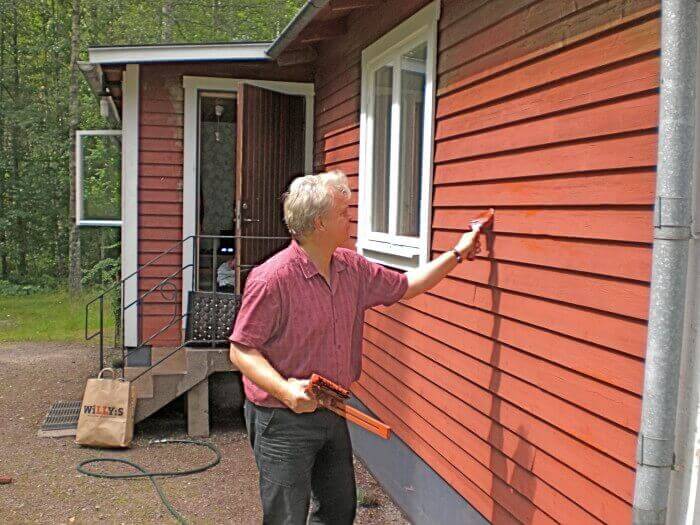
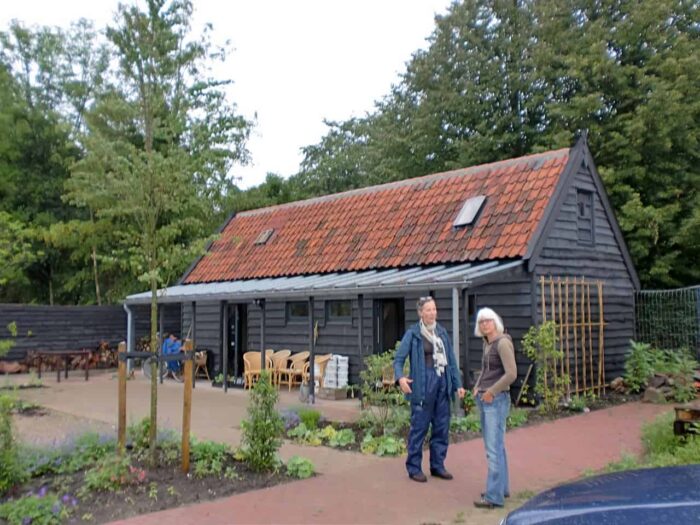
Moose S natural paint: only for rough, untreated wood
The ingredients of Moose S are very simple: starch from rye and wheat flour serves as a binder and water as a solvent. It also contains earth pigments and linseed oil. When extracting these substances, the environment is preserved as much as possible. All of the ingredients are cooked over a long period of time. This creates a protective, vapour-permeable finish that allows oxygen and moisture to pass through the paint layer: the wood can “breathe”. The mixture is boiled to achieve the correct thickness and binding. The use of volatile solvents (VOC) is avoided.
Attention: Moose S can only be used on very rough and untreated wood. Unfortunately, the adhesion is not sufficient for planed and impregnated wood. The natural paint easily washes off these surfaces. For smooth, impregnated and planed wood using Moose F is recommended. Paint type Moose F can be used for all types of wood, including treated or already painted wood.
Moose S is available in two colours: Falu Röd (Swedish red) and Vasa Svart (Deep black). Moose F is available in 19 colours.
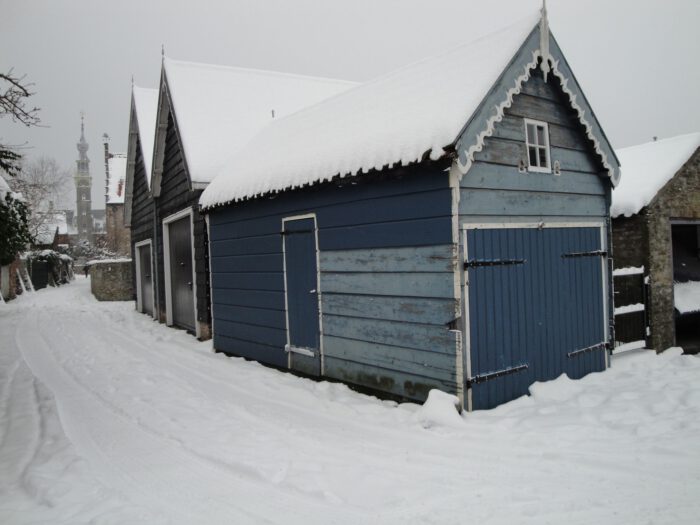
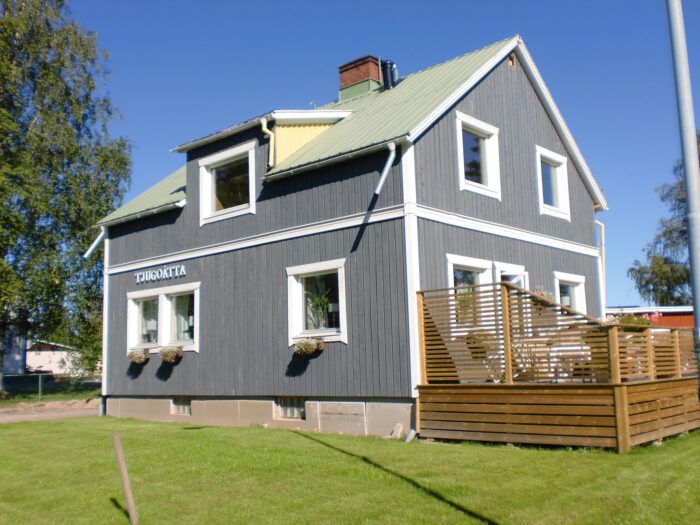
How to use a natural paint
Choose Moose S if you have a completely untreated, rough-sawn substrate. Moose F is suitable for all (other) types of wood, both unprocessed and already processed.
Consumption
For the consumption of Moose F, an area of 14 – 18 m² can be painted with 4 litres of paint. Consumption is calculated per two treatments. Note: Consumption also depends on the absorbency of the surface. On highly absorbent surfaces, consumption is naturally higher than on less absorbent surfaces. Consumption can also be up to 50% higher for large white surfaces. So take this into account when purchasing the paint.
An area of 14 – 18 m² can be painted with 4 liters of paint. Consumption is calculated per two layers of paint. Please note: consumption depends on the absorbency of the surface. On highly absorbent surfaces, consumption is naturally higher than on less absorbent surfaces. This should definitely be considered before purchasing the paint.
Painting
Applying the paint is particularly easy with a (block)brush. This helps to cover the entire wood with paint, including all the cracks and seams. For the first layer, dilute the paint with approx. 5 – 10% water so that it is thinner and can optimally penetrate the wood. Let the first layer dry. At a temperature of 20 °C, this takes up to several hours. At a temperature of 15 °C it can be around a day for it to dry. Then apply the second (covering) layer. Make sure that afterwards, it does not rain for approximately 3 days as the paint layer still needs to harden. You can clean brushes and work materials with some water and linseed oil soap.
For treated, painted or planed wood: use Moose F
In Sweden it is completely normal to build houses from rough, untreated wood. In other countries, we usually see more processed wood, such as treated and smooth planed wood. It’s also possible that you’ve already painted or stained your wood and want to repaint it. A natural paint such as Moose S cannot adhere to treated wood. We recommend using Moose F in this case.
Moose F is suitable for all types of wood and surfaces such as smooth planed wood, previously painted wood and impregnated wood. It contains the same natural ingredients as Moose S, but to make it suitable for smooth surfaces it also contains modified natural oils such as alkyd. Just like Moose S, Moose F is completely matt.
Moose F is very suitable for both indoor and outdoor use. For example, think of barns, wooden houses, fences and interior panelling. Production, use and disposal afterwards are fully sustainable and environmentally friendly. Moose Färg natural paint – a product that has been used in Sweden for centuries – is an ideal product for the conscious consumer, who has high demands on both appearance and sustainability.
Moose F is available in a wide range of colors with a real Swedish character.
Moose RDM for hardwood windows and doors
The third paint type in our assortment is Moose RDM. This type of paint is also based on the ancient natural paint, but contains more oil and filler. This variant is suitable for painting hardwood frames, doors and interior furniture. Unlike Moose F and Moose S, Moose RDM is less able to ‘bend’ with softwoods such as Douglas, spruce, pine and larch due to its thicker structure. This variant is therefore ideal for dimensionally stable doors and window frames.
Would you like additional, personal advice?
We are happy to help. Send an e-mail or call +31(0) 6 55 333 165. Watch our Instruction Video for more information. Apply here for a free color-card.










